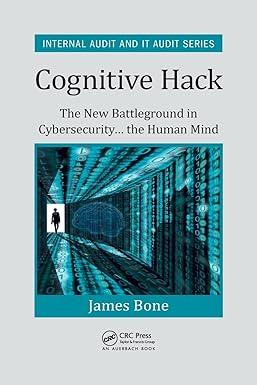Question
Consider the following data for November2017 from Cranberry Manufacturing Company, which makes silk pennants and uses a process-costing system. All direct materials are added at
Consider the following data for November2017
from Cranberry Manufacturing Company, which makes silk pennants and uses a process-costing system. All direct materials are added at the beginning of the process, and conversion costs are added evenly during the process. Spoilage is detected upon inspection at the completion of the process. Spoiled units are disposed of at zero net disposal value.
Cranberry
Manufacturing Company uses the FIFO method of process costing.
| Physical Units | Direct | Conversion | |
|
| (Pennants) | Materials | Costs |
| Work in process, November 1 Superscript aNovember 1a | 1,125 | $3,653 | $702 |
| Started in November 2017 | ? | ||
| Good units completed and transferred out during November 2017 | 8,800 | ||
| Normal spoilage | 130 | ||
| Abnormal spoilage | 65 | ||
| Work in process, November 30 Superscript bNovember 30b | 2,400 | ||
| Total costs added during November 2017 | $10,270 | $32,544 |
Superscript aDegree
of completion: direct materials, 100100%; conversion costs, 60%.
Superscript bDegree of completion: direct materials,100%; conversion costs, 30%.
| Equivalent Units | ||
|
| Direct | Conversion |
| Flow of Production | Materials | Costs |
| Good units completed and transferred out during current period: | ||
| From beginning work in process | 0 | 450 |
| Started and completed | 7,675 | 7,675 |
| Normal spoilage | 130 | 130 |
| Abnormal spoilage | 65 | 65 |
| Work in process, ending | 2,400 | 720 |
| Work done in current period only | 10,270 | 9,040 |
Begin by summarizing the total costs to account for.
| Save Accounting Table... | + | |||
| Copy to Clipboard... | + | |||
| Total | Direct | Conversion | ||
|
|
| Production Costs | Materials | Costs |
|
|
|
|
| |
|
|
|
|
| |
| Total costs to account for |
|
|
| |
Next, calculate cost per equivalent unit for direct materials and conversion costs. (Round your answers to the nearest cent.)
| Save Accounting Table... | + | |||
| Copy to Clipboard... | + | |||
| Direct | Conversion | ||
|
|
| Materials | Costs |
|
|
|
| |
| Divide by: |
|
|
|
| Cost per equivalent unit |
|
| |
Now assign costs to units completed and transferred out (including normal spoilage), to abnormal spoilage, and to units in ending work in process. (Complete all answer boxes. Enter a "0" for any zero amounts. Round your answers to the nearest dollar.)
| Save Accounting Table... | + | |||
| Copy to Clipboard... | + | |||
| Total | Direct | Conversion | ||
|
|
| Production Costs | Materials | Costs |
| Completed and transferred out: | ||||
|
|
|
|
| |
|
|
|
|
| |
| Total from beginning inventory before normal spoilage |
|
|
| |
| Save Accounting Table... | + | |||
| Copy to Clipboard... | + | |||
|
|
|
|
| |
|
|
|
|
| |
| Total costs of units completed and transferred out |
|
|
| |
| Save Accounting Table... | + | |||
| Copy to Clipboard... | + | |||
|
|
|
|
| |
|
|
|
|
| |
| Total costs accounted for |
|
|
| |
Step by Step Solution
There are 3 Steps involved in it
Step: 1

Get Instant Access to Expert-Tailored Solutions
See step-by-step solutions with expert insights and AI powered tools for academic success
Step: 2

Step: 3

Ace Your Homework with AI
Get the answers you need in no time with our AI-driven, step-by-step assistance
Get Started


